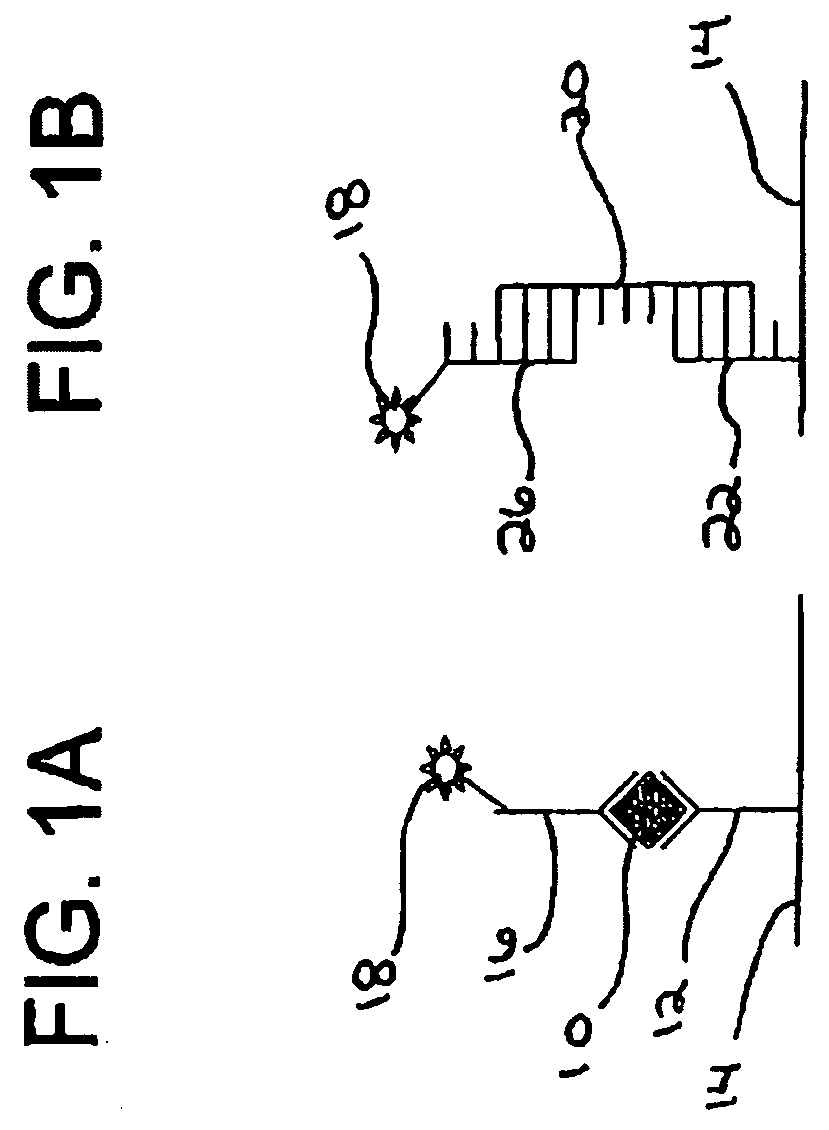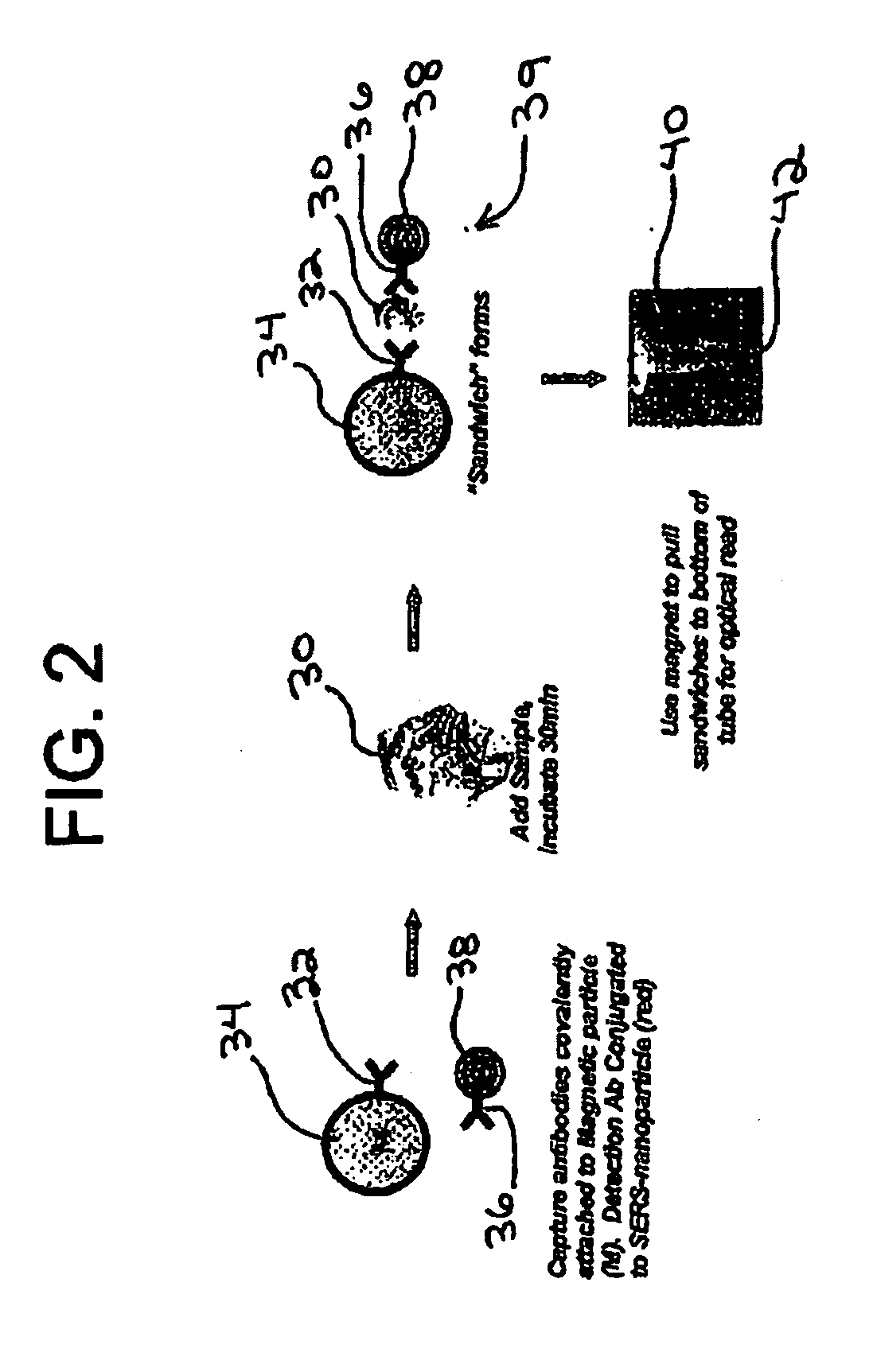Methods of controlling the sensitivity and dynamic range of a homogeneous assay
a technology of dynamic range and assay, which is applied in the field of controlling the sensitivity and dynamic range of a homogeneous assay, can solve the problems of limiting the dynamic range of the assay, and achieve the effect of expanding the dynamic range of accurate detection
- Summary
- Abstract
- Description
- Claims
- Application Information
AI Technical Summary
Benefits of technology
Problems solved by technology
Method used
Image
Examples
Embodiment Construction
[0036]The present invention relates to a method for determining the concentration of a target analyte. The term “target analyte,” as used herein, is a substance to be detected in a test sample using the present invention. The analyte can be any substance for which there exists a naturally occurring capture reagent, or for which a capture reagent can be prepared. The target analyte can bind to one or more binding moieties in an assay. The target analyte can include a protein, a peptide, an amino acid, a carbohydrate, a hormone, a nucleic acid, a steroid, a vitamin, a cell, a drug, a bacterium, a virus, and metabolites of, or antibodies to, any of the above substances. The target analyte can comprise, for example, oncology markers, such as prostate specific antigen (PSA), alpha-fetoprotein (AFP), carcinoembryonic antigen (CEA), and cyclin-dependent kinase inhibitor 2A (p16), human papilloma virus proteins such as E6 and / or E7 proteins, influenza virus, hormones, such as thyroid stimul...
PUM
| Property | Measurement | Unit |
|---|---|---|
| concentration | aaaaa | aaaaa |
| diameter | aaaaa | aaaaa |
| size | aaaaa | aaaaa |
Abstract
Description
Claims
Application Information
 Login to View More
Login to View More - R&D
- Intellectual Property
- Life Sciences
- Materials
- Tech Scout
- Unparalleled Data Quality
- Higher Quality Content
- 60% Fewer Hallucinations
Browse by: Latest US Patents, China's latest patents, Technical Efficacy Thesaurus, Application Domain, Technology Topic, Popular Technical Reports.
© 2025 PatSnap. All rights reserved.Legal|Privacy policy|Modern Slavery Act Transparency Statement|Sitemap|About US| Contact US: help@patsnap.com



